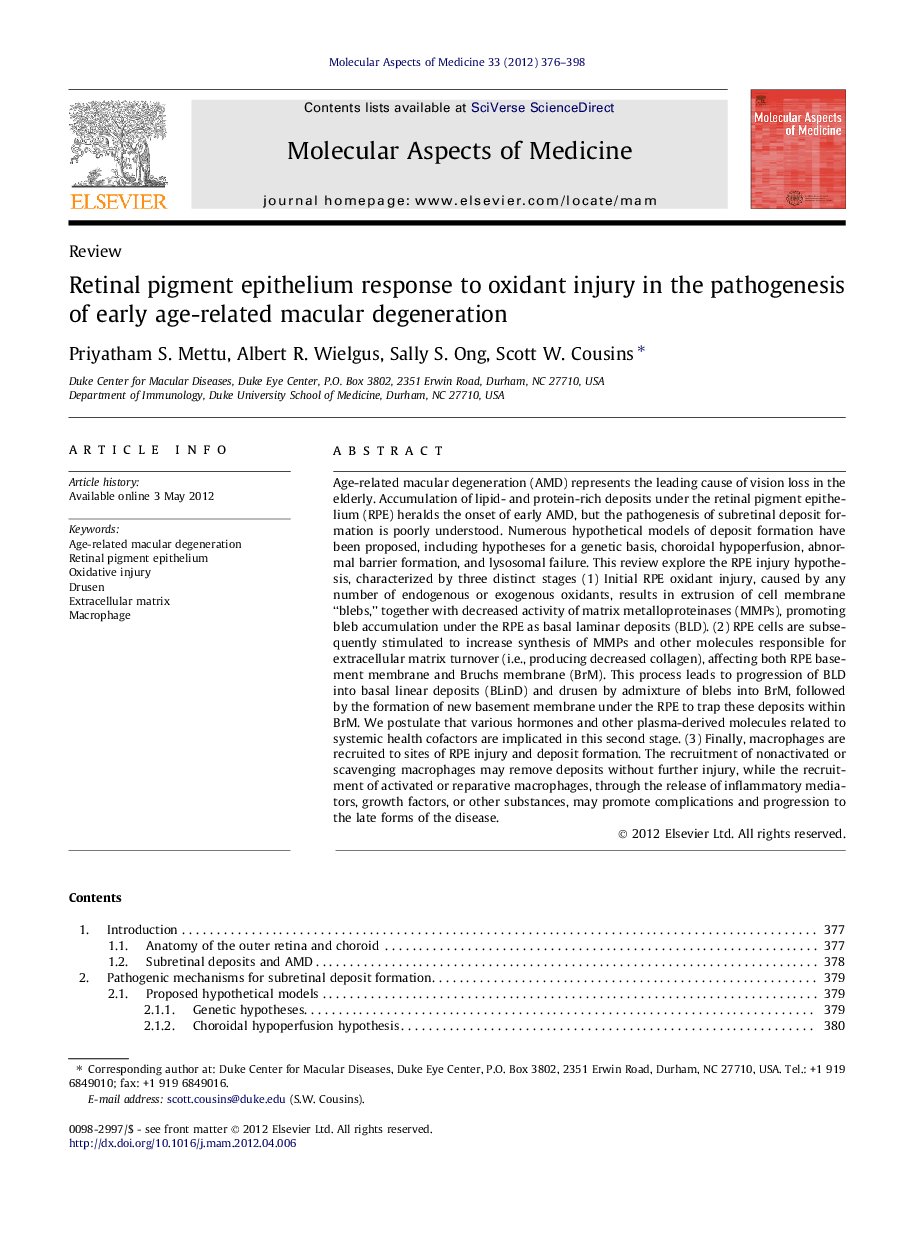| کد مقاله | کد نشریه | سال انتشار | مقاله انگلیسی | نسخه تمام متن |
|---|---|---|---|---|
| 1995838 | 1541456 | 2012 | 23 صفحه PDF | دانلود رایگان |
عنوان انگلیسی مقاله ISI
Retinal pigment epithelium response to oxidant injury in the pathogenesis of early age-related macular degeneration
دانلود مقاله + سفارش ترجمه
دانلود مقاله ISI انگلیسی
رایگان برای ایرانیان
کلمات کلیدی
موضوعات مرتبط
علوم زیستی و بیوفناوری
بیوشیمی، ژنتیک و زیست شناسی مولکولی
زیست شیمی
پیش نمایش صفحه اول مقاله

چکیده انگلیسی
Age-related macular degeneration (AMD) represents the leading cause of vision loss in the elderly. Accumulation of lipid- and protein-rich deposits under the retinal pigment epithelium (RPE) heralds the onset of early AMD, but the pathogenesis of subretinal deposit formation is poorly understood. Numerous hypothetical models of deposit formation have been proposed, including hypotheses for a genetic basis, choroidal hypoperfusion, abnormal barrier formation, and lysosomal failure. This review explore the RPE injury hypothesis, characterized by three distinct stages (1) Initial RPE oxidant injury, caused by any number of endogenous or exogenous oxidants, results in extrusion of cell membrane “blebs,” together with decreased activity of matrix metalloproteinases (MMPs), promoting bleb accumulation under the RPE as basal laminar deposits (BLD). (2) RPE cells are subsequently stimulated to increase synthesis of MMPs and other molecules responsible for extracellular matrix turnover (i.e., producing decreased collagen), affecting both RPE basement membrane and Bruchs membrane (BrM). This process leads to progression of BLD into basal linear deposits (BLinD) and drusen by admixture of blebs into BrM, followed by the formation of new basement membrane under the RPE to trap these deposits within BrM. We postulate that various hormones and other plasma-derived molecules related to systemic health cofactors are implicated in this second stage. (3) Finally, macrophages are recruited to sites of RPE injury and deposit formation. The recruitment of nonactivated or scavenging macrophages may remove deposits without further injury, while the recruitment of activated or reparative macrophages, through the release of inflammatory mediators, growth factors, or other substances, may promote complications and progression to the late forms of the disease.
ناشر
Database: Elsevier - ScienceDirect (ساینس دایرکت)
Journal: Molecular Aspects of Medicine - Volume 33, Issue 4, August 2012, Pages 376-398
Journal: Molecular Aspects of Medicine - Volume 33, Issue 4, August 2012, Pages 376-398
نویسندگان
Priyatham S. Mettu, Albert R. Wielgus, Sally S. Ong, Scott W. Cousins,